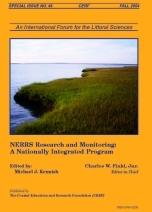Salt marshes provide a buffer between the terrestrial landscape and estuaries and may be important in preventing the movement of land-derived nutrients into coastal waters. We examined the response of S. patens in the field to additions of dissolved inorganic nitrogen (N) and phosphorus (P) and found significant (p < 0.05) positive N effects on aboveground biomass, leaf chlorophyll, tissue nutrient concentrations, and induction of fluorescence kinetics of chlorophyll a. Mean endomycorrhizal colonization among treatments was 22%, and fungal colonization ranged from 2% to 61% in the plots. We found no significant effect of N or P on endomycorrhizal colonization, but there was a significant inverse relationship (r = −0.66, p = 0.005) between the belowground biomass and fungal colonization. This study showed that S. patens could sequester 44–100% of the added N and 82–100% of the added P in its leaves, roots, and rhizomes. However, it is unclear how long-term nutrient overenrichment and the resulting changes in the S. patens–microbe–sediment system might alter the marsh buffering capacity.
BioOne.org will be down briefly for maintenance on 12 February 2025 between 18:00-21:00 Pacific Time US. We apologize for any inconvenience.
How to translate text using browser tools
1 November 2004
Response of Spartina patens to Dissolved Inorganic Nutrient Additions in the Field
Cathleen Wigand,
Glen B. Thursby,
Richard A. McKinney,
Antelmo F. Santos
ACCESS THE FULL ARTICLE

Journal of Coastal Research
Vol. 2009 • No. 10045
Fall 2004
Vol. 2009 • No. 10045
Fall 2004
endomycorrhizae
Eutrophication
fluorescence
performance index
photosynthesis




